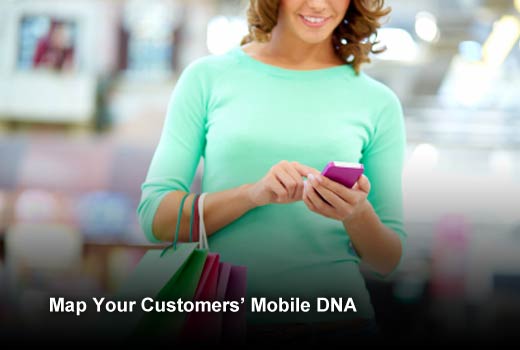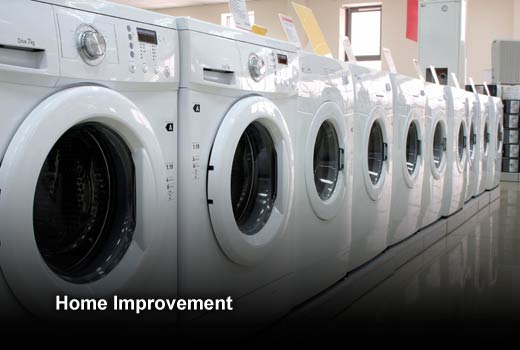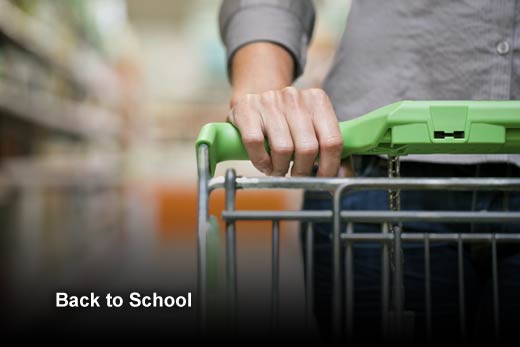As the competition to capture consumer attention on mobile devices grows, marketers must know their customers inside and out, in order to effectively engage with them. To do this, mobile cannot be treated as simply a channel, but as a relationship and an ongoing, ever-changing one at that.
If you’re always talking and never listening, observing and remembering what people like, what they do, and where they go, you won’t keep relationships very long. Given this, loyalty apps need to be smarter – they need to observe more than location, and they need to combine a series of events over time to understand consumer context, preferences and intent, in order to open the door to real engagement.
Relevance is key as each individual and their device are personal. Each individual has a unique way of wanting to relate to and interact with brands and retailers. If location is the only criteria triggering an offer, brands run the risk of annoying consumers much like the guy handing out lewd postcards on the Vegas strip. Just because you walk by doesn’t mean you’re interested.
Wireless industry leader Smith Micro asserts that retailers must ask themselves how each individual consumer wishes to interact with them via their mobile device. Once brands evaluate preferences, circumstances, patterns and history over time, they begin to map their customers’ unique mobile DNA and build a genuine, mutually beneficial relationship.
The following are hypothetical scenarios that model ideal mobile marketing instances that successfully personalize their offerings and take a positive first step at mapping their customers’ personal mobile DNA.

Map Your Customers’ Mobile DNA
Click through for hypothetical scenarios that model ideal mobile marketing instances that successfully personalize offerings and take a positive first step at mapping customers’ personal mobile DNA, as identified by Smith Micro.

Home Improvement
A customer enters a home improvement store and receives a welcome message on his smartphone. The message asks if he needs help shopping today. He taps ‘not now’ and heads to the washer/dryer section. His phone interacts with beacons and detects that he’s been dwelling in the section for 15 minutes. The phone also detects that he’s launched Yelp and Consumer Reports mobile apps.
Armed with this circumstantial knowledge, the store sends a price matching notification to his device, offers free delivery on washer/dryer combos, and asks if he needs assistance from a home appliance expert. The customer taps ‘yes,’ gets the details he needs, and decides to make his purchase in store that day.
In this example, the customer isn’t just offered a discount, he’s offered customer service at the right moment, from the right person, and reminded of the advantage of taking home what he wanted on the same day.
Even without any notifications sent to the device, these contextual insights of dwell time and app usage would help to identify showrooming behavior, allowing stores to plan better staff coverage on the floor.

Stay In or Go Out?
There are few things travelers value more than convenience. While smartphones and tablets have become indispensable travel tools, travelers must still research, plan and figure out the best areas to visit, things to do, and places to eat. By taking advantage of context-driven engagement, hoteliers can conveniently provide such information directly to the traveler. Hoteliers can use time of day, location, area dwell time and even app usage to provide relevant recommendations and offers to their clientele for onsite restaurants, cafes, bars, spas and other services.
For example, between the hours of 6 p.m. and 8 p.m., location services – such as beacons – detect hotel guests dwelling near lobby couches and the lobby bar, while on-device software detects the Urbanspoon app being accessed. These combined events indicate that guests are waiting to meet people for dinner. This real-time context (time of day, area dwell time and app open) triggers a proactive message to be sent to guests’ devices about restaurant offers, chef specialties of the day, or a new wine list to persuade guests to remain at the hotel for dinner.
Not only is this an opportunity for hotels to increase total revenue against total available rooms (TRevPAR), but it also represents an opportunity to increase customer satisfaction and loyalty. The convenience of staying onsite and getting a special deal (or special treatment) in response to a mobile offer could be exactly what travelers or guests with little time want most. For guests who prefer to eat out, hotels can monetize recommendations through restaurant partners who are accustomed to paying for ad placement in magazines, Google AdWords™ and reservation systems such as OpenTable.

Take Me Out to the Ballgame
A baseball fan at the ballgame passes several food stations on the way to her seat. Rather than barrage the fan with offers, a context-enabled app (assuming opt-in) observes that the fan is lingering in front of a burger joint for two minutes. The context-enabled app also detects several vegetarian-related apps in-use on her phone and pushes an offer to her mobile device for a meat-free mushroom burger.
In addition, at sporting events, conferences, festivals and other large group events, venues can use beacons and other location technologies to measure foot traffic and dwell time, helping attendees avoid long lines and minimize wait for restrooms and concessions. GPS and routing algorithms can also help attendees find the fastest path to their seats or meeting rooms.

Back to School
A consumer is detected lingering near the school supplies, thus indicating that she is a prime candidate for back-to-school messaging. Fearful of blasting and essentially spamming her down every aisle, the context-enabled app identifies a sequence of events, such as the shopper moving between pencils, backpacks and lunch boxes, and delivers timely back-to-school promotional material.
In this instance, location-triggered promotions are a key ingredient to maximize engagement, however, monitoring the consumer’s in-store movement patterns over time becomes more effective than a single trigger.













